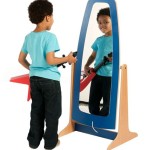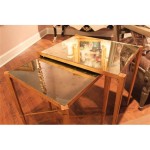How to Screen Mirror from Mobile, Smart TV, and PC
Screen mirroring, the act of wirelessly displaying the content of one device's screen onto another, has become increasingly popular for presentations, entertainment, and collaborative work. This article outlines the various methods and technologies available for screen mirroring between mobile devices, smart TVs, and PCs.
Mobile to Smart TV Mirroring:
Several options exist for mirroring content from a mobile device to a smart TV. One common method utilizes built-in casting features. Many smart TVs and mobile devices support technologies such as Chromecast, Miracast, or AirPlay. These protocols allow users to seamlessly stream content from their mobile device directly to the TV. To initiate mirroring, users typically access the screen mirroring or casting option in their mobile device's settings or quick settings menu and select their smart TV from the available devices.Another method for mobile-to-TV mirroring involves utilizing specific apps designed for screen sharing. Applications like AllCast, LocalCast, and others provide comprehensive mirroring capabilities, often supporting a wider range of devices and offering additional features beyond basic screen mirroring. Users should download and install such an app on both their mobile device and smart TV (if required by the app), then follow the app's instructions to establish a connection and initiate mirroring.
HDMI cables offer a wired alternative for screen mirroring from mobile devices to TVs equipped with HDMI ports. While not strictly wireless mirroring, this approach provides a stable, lag-free connection. Users will need an adapter compatible with their mobile device's output (e.g., USB-C to HDMI, Lightning to HDMI) and a standard HDMI cable to connect the two devices.
PC to Smart TV Mirroring:
Mirroring a PC's display to a smart TV can be achieved through several methods. Wireless mirroring protocols, such as Miracast, are supported by some Windows PCs and smart TVs. Users can access the "Project" option in the Windows Action Center (Windows key + P) and select "Connect to a wireless display" to initiate the connection. Note that compatibility between devices is crucial for successful Miracast mirroring.Chromecast offers another convenient option for mirroring a Chrome browser tab or the entire desktop to a Chromecast-enabled smart TV. Users can cast from the Chrome browser by clicking the three-dot menu and selecting "Cast." They can then choose to cast a specific tab or their entire desktop.
For PCs with an HDMI output, a direct HDMI connection to the smart TV provides a reliable, high-quality mirroring solution. This method requires a standard HDMI cable and ensures minimal latency, ideal for activities like gaming or video editing where responsiveness is critical.
Mobile to PC Mirroring:
Mirroring a mobile device's screen to a PC can be helpful for presentations, demonstrations, or troubleshooting. Several software solutions facilitate this process. Microsoft's "Your Phone" app, pre-installed on Windows 10 and 11, allows users to link their Android phone and mirror the phone's screen, notifications, and even make calls directly from the PC. Similar functionality is available for iPhones through third-party apps.Third-party applications like Vysor, ApowerMirror, and others offer mobile-to-PC mirroring capabilities. These applications typically require installation on both the mobile device and the PC. Some offer both wired and wireless connection options and may include additional features like screen recording and remote control.
Troubleshooting Common Mirroring Issues:
Intermittent connectivity, lag, or failure to establish a connection are common issues encountered during screen mirroring. Ensuring that both devices are connected to the same Wi-Fi network is crucial for stable wireless mirroring. Restarting devices, updating software and drivers, and checking for interference from other wireless devices can often resolve connectivity problems.If using a wired connection, verifying cable integrity and ensuring proper connection to the appropriate ports is essential. Consulting the user manuals for both devices can provide specific troubleshooting steps and compatibility information. Different mirroring technologies have different system requirements, and compatibility limitations may prevent successful mirroring between certain devices.
Choosing the appropriate mirroring method depends on the specific devices involved and the user's requirements. Wireless methods offer convenience and flexibility, while wired connections provide stability and reduced latency. Understanding the available options and troubleshooting techniques can empower users to effectively leverage screen mirroring for various applications.

2024 Tutorial How To Mirror Phone Tv Without Wi Fi

Top 3 Ways To Screen Mirror Android Sony Tv

To Cast Your Android Phone On Pc Via Screen Mirroring Resource Centre By Reliance Digital

How To Mirror From Your Samsung Smartphone Tv New Zealand

How To Screen Mirror From Your Phone Tablet Or Computer Roku Streaming Device
:max_bytes(150000):strip_icc()/lg-screen-share-menu-yellow-819f174e11fa46eb9ab39a80d20a6872.jpg?strip=all)
How To Do Screen Mirroring On Lg Smart Tvs

What Is Screen Mirroring And How Do I Use It With My Samsung Tv Mobile Device
Screen Mirroring Cast To Tv Apps On Google Play

Screen Mirroring A Phone Ipad Or Laptop To Tv How Push Your The Big
Screen Mirroring Cast To Tv Apps On Google Play








